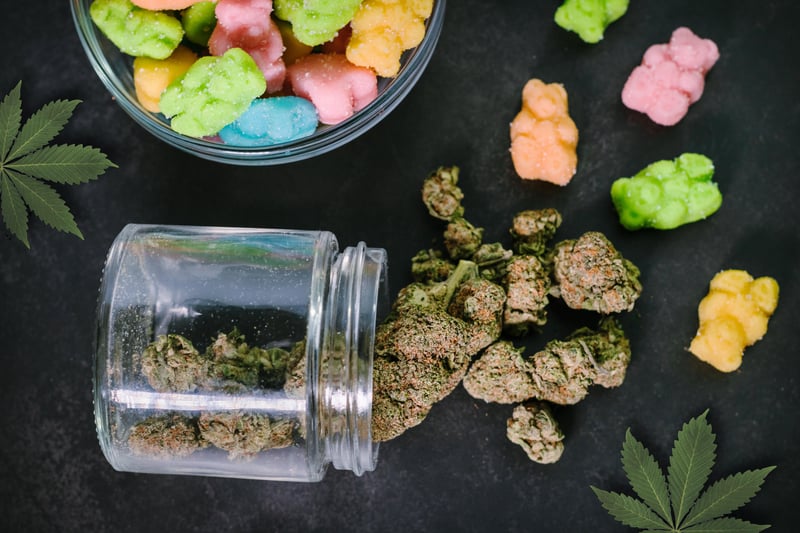Due to a recent change of our website, the process for submitting refill requests online has now changed.
Please click on “Sign Up Today!†to create a new account, and be sure to download our NEW Mobile app!
Thank you for your patience during this transition
Get Healthy!

- Amy Norton
- Posted January 3, 2023
As Popularity of Weed Edibles Rises, So Do Accidental Poisonings in Kids
As more U.S. states legalize marijuana, the number of preschoolers accidentally eating cannabis "edibles" is rising in tandem, a new study shows.
In the past five years, U.S. poison control centers have witnessed a whopping 14-fold increase in calls about youngsters who got their hands on marijuana edibles.
In 2017, there were just 207 cases reported nationally. By 2021, that had ballooned to over 3,000.
None of the incidents were fatal, and many children had mild symptoms like excessive sleepiness. But 36% were treated in an emergency room, and nearly 23% had to be admitted to the hospital.
Experts said the findings, published Jan. 3 in the journal Pediatrics, highlight a new household safety hazard.
Marijuana edibles are not only widely available now, but come in forms like gummies and weed "candies" that young children cannot resist, said lead researcher Dr. Marit Tweet.
"You can't reason with a toddler, 'Don't eat those gummies,'" said Tweet, an assistant professor of emergency medicine at Southern Illinois University School of Medicine.
According to Tweet, the most visible signs of marijuana poisoning in a youngster are often related to central nervous system depression.
"That can mean they're just not acting right -- they're not responding like they normally would," she said. "Or they may be excessively sleepy. You may not be able to wake them up."
At the extreme end, children can develop trouble breathing or lapse into a coma.
It all depends on size -- both the child's and the dose of THC (the active ingredient in marijuana), said Dr. Vincent Calleo, medical director of the Upstate New York Poison Center in Syracuse.
"The dose is what makes the poison," Calleo said. And unfortunately, he noted, marijuana edibles look like any other sweet treat to a child.
"They're unlikely to have the self-control to only eat one gummy, and of course they shouldn't have any," Calleo pointed out.
The findings came as no surprise to Calleo, whose center is among those seeing a sharp rise in calls about child edible exposures.
"This really does mirror what we've seen in upstate New York in recent years," he said.
Both Calleo and Tweet emphasized another point: The official numbers reflect only reports to regional poison control centers, meaning they're almost certainly an undercount.
"The number being reported is probably much lower than the actual number of children being exposed to edibles," Calleo said.
For the study, Tweet and her colleagues looked at data from all 55 regional poison control centers in the United States. They focused on figures from 2017 to 2021 -- a time when marijuana laws were rapidly changing nationwide.
At the beginning of 2017, only eight states and Washington, D.C., allowed adults to use marijuana recreationally. By May 2022, that had risen to 18 states. Meanwhile, medical marijuana use also expanded, with most U.S. states now allowing it.
Overall, the study found, poison control centers recorded an increase of 1,375% in reports of edible exposures among children younger than 6. The majority of those kids were 2 or 3.
Almost 15% ended up in the hospital, while another 8% fell so ill they were admitted to a critical care unit.
Both doctors had some advice for parents or other caregivers who use edibles:
- Store them up high and out of reach of children.
- Consider putting them in a locked medication box.
- Do not keep them in the kitchen, to keep kids from equating them with food.
- Do not eat edibles in front of children.
"I would treat these just like any medication you use," Calleo said.
Tweet noted that, in contrast to tobacco and alcohol, the United States has no national laws on the packaging of marijuana products.
Several states have stepped into the void, she noted: Some have imposed limits on the amount of THC per package and required edibles to be in opaque packaging, rather than the brightly colored wrappers that are synonymous to candy in a child's eyes.
Calleo stressed that any time an adult fears a child has swallowed edibles, or any other potentially toxic substance, they should call their regional poison control center for guidance.
"We're not going to judge you," he said. "Our job is to provide the best care possible."
More information
The American Academy of Pediatrics has more on preventing marijuana poisoning.
SOURCES: Marit Tweet, MD, assistant professor, emergency medicine, Southern Illinois University School of Medicine, Springfield; Vincent Calleo, MD, medical director, Upstate New York Poison Center, and assistant professor, emergency medicine and pediatrics, SUNY Upstate Medical University, Syracuse, N.Y.; Pediatrics, Jan. 3, 2023, online
